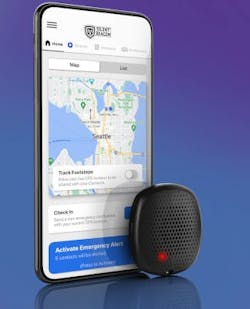Tennessee Mental Health Cooperative Deploys Wearable Safety Devices
Key Highlights
-
MHC deployed a wearable alert system by Silent Beacon to support staff who frequently work alone in unpredictable community environments.
-
Silent activation, GPS location sharing and clear internal procedures have improved confidence and situational awareness for field-based teams.
-
Early usage data and real-time monitoring are informing future plans to expand the system across additional programs and locations.
The Mental Health Cooperative (MHC), a Tennessee nonprofit serving more than 17,000 people each month, has deployed a wearable alert system to support the safety of case managers, clinicians, and crisis responders who often work alone in community environments.
The move reflects a broader awareness in the behavioral-health sector of the risks facing employees who regularly enter unfamiliar neighborhoods and unpredictable situations as part of their daily responsibilities.
Addressing safety concerns for mobile mental-health workers
While MHC had not experienced a recent internal incident, a high-profile act of workplace violence in Nashville prompted leadership to reassess safety measures for field-based teams. According to Traci Pekovitch, MHC’s safety specialist, the event served as “a reminder that even without a direct incident, the risk is still there for our staff who walk into unpredictable situations every day.”
The organization concluded that workers needed a discreet method to request assistance and share their location in real time, particularly in circumstances where overtly signaling distress could escalate tension or disrupt rapport with clients.
MHC evaluated several emergency communication tools before selecting a system provided by Silent Beacon that combines a wearable alert device, a paired mobile app and a cloud-based monitoring dashboard. Pekovitch said staff repeatedly emphasized the importance of silent activation. “There are situations where you don’t want to draw attention to yourself by making it obvious you’ve asked for help. Having a silent option was essential,” she told SecurityInfoWatch.
She added that the ability to transmit GPS coordinates instantly to designated contacts was necessary to support “quick follow-up when someone in the field needs support or isn’t responding as expected.”
The system was deployed in-house beginning in November 2024, with remote onboarding support from Silent Beacon’s team. Because the devices required no external installation or infrastructure changes, MHC handled configuration internally and distributed units directly to staff. The full process — from evaluation to go-live — took approximately one month and included internal approvals, device setup and training.
Training covered how to pair the wearable device with the mobile app, test the system and understand how silent and audible activations are routed. Staff received demonstrations, written guides and one-on-one support as needed. Silent Beacon personnel were available during rollout to assist with questions. New employees receive similar instruction during orientation and can opt into the program.
Policies guide how the alert system is used in the field
MHC developed internal standard operating procedures (SOPs) defining when use of the Silent Beacon device may be appropriate, such as encountering environmental warnings, signs of escalating conflict or any situation where a staff member feels unsafe. Pekovitch said the SOPs were created to “give people clarity about when it’s appropriate to activate the device and how to choose between audible and silent alerts based on what they’re encountering.”
Supervisors and safety leads regularly revisit these procedures during team meetings and field safety debriefs to reinforce consistent use.
Today, 43% of eligible staff use the Silent Beacon device as part of their daily workflow, with the highest concentration in Nashville, Clarksville and Murfreesboro. Pekovitch said many employees describe the device as a source of reassurance. “For some team members, just knowing they have a discreet way to call for help reduces the stress that can come with certain home visits or community interactions,” she explained.
Although MHC has not experienced a high-risk incident requiring 911 intervention, the Silent Beacon system has been activated 101 times using the “Footsteps” alert mode. These activations generated location updates and sent notifications to internal contacts, allowing supervisors to quickly confirm staff well-being and initiate follow-up communication. Pekovitch said these early uses “showed the system works the way we need it to when someone feels uneasy and wants another set of eyes on their situation.”
Monitoring system readiness and planning for future expansion
MHC’s safety team uses Silent Beacon’s cloud-based dashboard to monitor alerts in real time, track device battery status and connectivity and review historical usage patterns. This visibility helps the organization identify where additional training may be needed and maintain overall system readiness across the workforce.
As part of its longer-term planning, MHC is considering whether to extend its use of Silent Beacon across additional programs and locations. Pekovitch said the system has integrated naturally into the organization’s fieldwork and emphasized the role it plays in helping staff feel supported.
“For MHC, safety is foundational to the work we do. When staff feel secure and supported, they can focus fully on serving our clients with confidence,” Pekovitch expressed. “We hope our efforts encourage other healthcare and nonprofit organizations to think proactively about how they protect their frontline teams.”
About the Author
Rodney Bosch
Editor-in-Chief/SecurityInfoWatch.com
Rodney Bosch is the Editor-in-Chief of SecurityInfoWatch.com. He has covered the security industry since 2006 for multiple major security publications. Reach him at [email protected].



